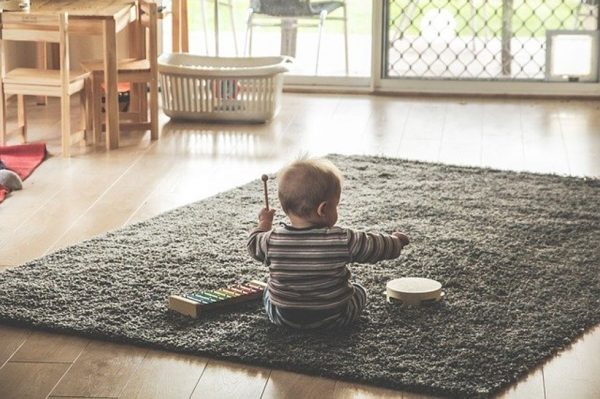
Music Therapy for Autistic Children
Music is one of the best way of communication. It brings people together. Beyond the boundaries world is united under various types of music. It is a “universal language” that crosses all cultural lines. Music is a basic human response, spanning all degrees of ability/disability. Music holds universal appeal. It provides a bridge in a non-threatening setting between people and/or between individuals and their environment, facilitating relationships, learning, self-expression, and communication. Music captures and helps maintain attention. It is highly motivating and may be used as a natural “reinforce” for desired responses.
Music is a complex amalgam of melody, harmony, rhythm, timbre and silence in a particular (intended) structure.
What is Music Therapy?
Children show curiosity towards instruments and sound. They like rhythmic beatings and singing. This behavior of children has been in use in treating children who have difficulty in communication and who has autism. Music Therapy is the clinical and evidence-based use of music interventions to accomplish Individualized goals within a therapeutic relationship by a credentialed professional who has completed an approved music therapy program. It is a well-established allied health profession that uses music therapeutically to address behavioral, social, psychological, communicative, physical, sensory motor, and/or cognitive functioning. Because music therapy is a powerful and non-threatening medium, unique outcomes are possible.
The treatment includes the use of behavioral, biomedical, developmental, educational, humanistic, adaptive music instruction, and/or other models. Music therapy enhances one’s quality of life, involving relationships between a qualified music therapist and individual; between one individual and another; between the individual and his/her family; and between the music and the participants. These relationships are structured and adapted through the elements of music to create a positive environment and set the occasion for successful growth.
Why Music Therapy?
Music therapy may address several needs simultaneously in a positive and exciting medium: it may provide pleasurable learning that promotes success. Furthermore, music therapy can greatly enhance the quality of life of the young child and his/her family. Music is often the first thing to which a child relates.. Music occurs naturally in our environment in many settings and is a socially appropriate activity and leisure skill. Music provides a predictable time-oriented and reality-oriented structure while offering opportunities for participation atone’s own level of functioning and ability. Not only may music activities be opportunities for a child to “shine,” but they may also be used to reinforce non-musical goals. Most people, especially children, enjoy music – therefore, music therapy can be the therapy that reinforces all other therapies.
How Does Music Therapy works?
Music therapy enhances the quality of life. It involves relationships between a qualified therapist and child; between one child and another; between child and family; and between the music and the participants. These relationships are structured and adapted through the elements of music to create a positive environment and set the occasion for successful growth.
How Does Music Therapy Make a Difference with Young Children?
Through music, children take an inner experience and move it into a shared creative experience. Group music releases energy which can be channeled in creative, productive directions. Children learn about themselves and others by playing music together and by listening to each other. Music is perfectly designed for training children’s listening skills. Good listening skills and school achievement go hand in hand. The literature reports that most individuals with ASD respond positively to music. Children with ASD often show a heightened interest and response to music, making it an excellent therapeutic tool for working with them.
The development and the remediation of speech of an autistic child are carried out by music therapy. The communication deficit that is observed in autistic children may include expressive speech which may be impersonal or nonexistent. Speech can range from complete silence to grunts, humming, cries, explosive shrieks as well as guttural sounds.
Musically intoned vocalizations along with consonant-vowel combinations may be used and this is a classy mix of babbling words that are recognized vaguely. This may also seem like a foreign sound that is new to a child.
- Music stimulates all of the senses and involves the child at many levels. This “multimodal approach” facilitates many developmental skills.
- Quality learning and maximum participation occur when children are permitted to experience the joy of play. The medium of music therapy allows this play to occur naturally and frequently.
- Music is highly motivating, yet it can also have a calming and relaxing effect. Enjoyable music activities are designed to be success-oriented and make children feel better about themselves.
- Music therapy can help a child manage pain and stressful situations.
- Music can encourage socialization, self-expression, communication, and motor development.
- Because the brain processes music in both hemispheres, music can stimulate cognitive functioning and may be used for remediation of some speech/language skills.
References:
- http://www.musikgarten.org/
- http://www.musictherapy.org/
- http://www.coastmusictherapy.com/free-resources/
- http://www.therhythmtree.com/
- Image credit: Image by thedanw from Pixabay (Free for commercial use)
Author: Sumana Rao | Posted on: October 11, 2022
« Premature And Early Menopause Are Linked to Dementia In Women -Study Scientists Track Behavior of Intestinal Bacteria »






















Write a comment